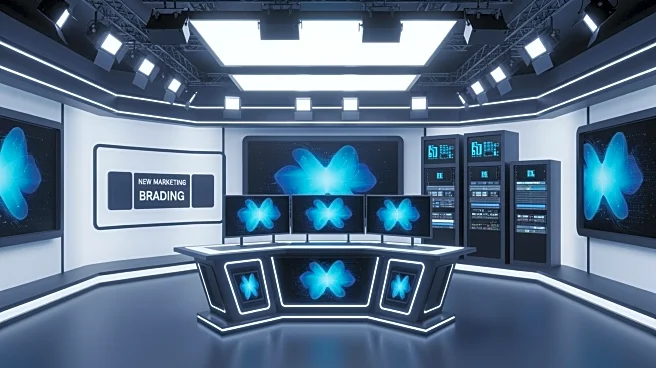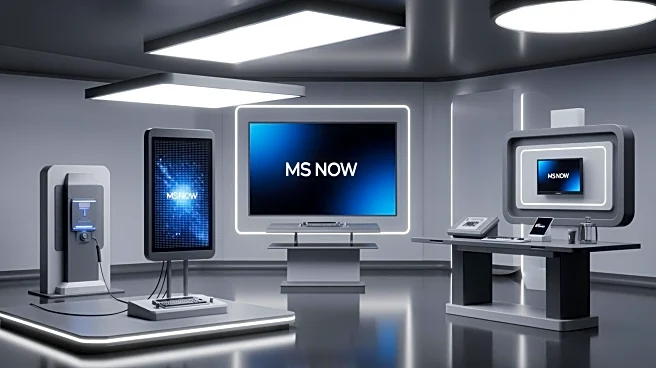What's Happening?
MSNBC has revealed its new studio facilities in Times Square as part of its rebranding to MS NOW. The new setup includes three New York studios, a virtual reality studio, two control rooms, and a dedicated podcast studio. The virtual reality studio is
equipped with a custom 1.6 mm LED video wall capable of 240 Hz operation, featuring over 60 million pixels. This advanced technology allows for real-time shifts in content perspective, enhancing the viewing experience. The studios were constructed in just three months and are designed to support over 120 hours of live programming. Additionally, MSNBC has launched a national marketing campaign titled 'We the People' to promote the rebrand, featuring prominent network journalists and cultural figures.
Why It's Important?
The unveiling of these state-of-the-art studios marks a significant investment in MSNBC's broadcasting capabilities, potentially setting a new standard for news production. The advanced technology, such as the virtual reality studio, could attract a larger audience by offering a more immersive viewing experience. The rebranding to MS NOW, supported by a $20 million marketing campaign, aims to reinforce the network's commitment to trusted reporting and bold storytelling. This move could strengthen MSNBC's position in the competitive news media landscape, appealing to both existing viewers and new audiences.
What's Next?
As the rebranding to MS NOW takes effect, the network is likely to monitor audience reception closely. The success of the new studios and marketing campaign could influence future investments in technology and content. Other news networks may also consider similar technological upgrades to remain competitive. The impact of the rebrand on viewership ratings and advertising revenue will be key indicators of its success.
Beyond the Headlines
The integration of virtual reality technology in news broadcasting could have broader implications for the industry, potentially leading to more interactive and engaging news formats. This shift may also prompt discussions on the ethical use of such technology in journalism, particularly concerning the accuracy and authenticity of presented content.













